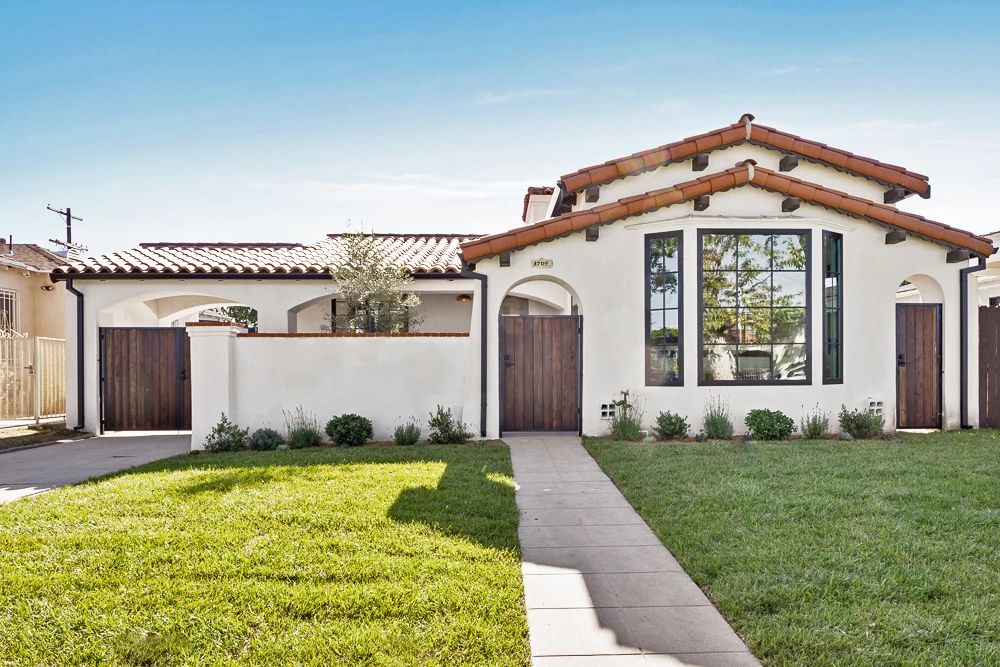
When it comes to insulating your home in Spain, it’s important to consider not just the price but also the quality of the insulation materials. Choosing high-quality insulation options ensures that your home is effectively insulated, leading to lower energy bills and a more comfortable living environment. High-quality insulation materials also have a longer lifespan, so you won’t have to worry about replacing them as frequently. Additionally, investing in quality insulation options can increase the value of your home, making it a wise investment in the long run.
Some high-quality insulation options available in Spain include fiberglass, cellulose, spray foam, and radiant barrier insulation. These materials offer different levels of insulation effectiveness, durability, and cost. Fiberglass insulation is a popular and cost-effective option that can be used in walls, floors, and ceilings. Cellulose insulation is environmentally friendly and can be blown into tight spaces, making it a good option for attics and walls. Spray foam insulation provides airtight insulation and is ideal for tight spaces and hard-to-reach areas. Radiant barrier insulation reflects heat away from the home and is a good option for homes in hot climates.

Read More: High-Tech Gründerfonds Closes New Fund at €493.8 Million
Ultimately, the choice of insulation materials should be based on the specific needs of your home, including its location, building type, and budget. It’s important to consult with a professional to determine which insulation option is best suited for your home’s specific needs. By investing in high-quality insulation materials, you can improve the energy efficiency of your home and enjoy a more comfortable living environment while saving money on energy bills in the long run.
When it comes to insulating your home in Spain, there are several options available to you, each with its own benefits and drawbacks in terms of price and quality. Here are some of the best price-quality options for insulating your home in Spain:
Are you tired of high energy bills, noisy neighbors, and uncomfortable indoor temperatures?
Insulating your home in Spain can solve all these problems and more. In this ultimate guide, we’ll cover everything you need to know about home insulation, from why it’s important to how to do it right.
Why Insulate Your Home in Spain?
Lower Your Energy Bills
Insulation is the key to keeping your home cool in the summer and warm in the winter without relying on air conditioning or heating systems. By sealing air leaks and preventing heat transfer, you can reduce your energy consumption and save money on your bills.
Increase Your Comfort
Insulation not only reduces your energy bills, but also makes your home more comfortable. Proper insulation can eliminate drafts, cold spots, and hot spots, and provide a consistent temperature throughout your home.
Reduce Noise Pollution
Living in a noisy neighborhood can be frustrating, but insulation can help. Soundproof insulation can absorb noise and prevent it from traveling through walls and floors, making your home a peaceful oasis.
Improve Your Home’s Value
Insulation is an investment that pays off in more ways than one. A well-insulated home is more valuable on the real estate market, and can even increase your home’s resale value.
Types of Insulation
There are many different types of insulation to choose from, each with its own advantages and disadvantages. Here are some of the most common types of insulation:
Batt Insulation
Batt insulation is made of fiberglass and comes in rolls or batts. It’s easy to install, but can be difficult to fit into tight spaces or around obstacles.
Blown-in Insulation
Blown-in insulation is made of cellulose or fiberglass and is blown into walls or attics using a machine. It’s a good option for hard-to-reach areas or irregularly shaped spaces.
Spray Foam Insulation
Spray foam insulation is made of polyurethane and is sprayed into walls or attics using a machine. It’s a good option for sealing air leaks and creating a moisture barrier, but can be expensive.
Radiant Barrier Insulation
Radiant barrier insulation is made of reflective material and is installed in attics to reflect heat away from the home. It’s a good option for hot climates, but does not provide much insulation value.
Where to Insulate
Not all areas of your home require insulation. Here are some of the most important areas to insulate:
Attic
The attic is one of the most important areas to insulate, as it can account for up to 25% of heat loss in a home. Insulating the attic can prevent heat transfer and reduce energy bills.
Walls
Walls can also be a major source of heat loss. Insulating walls can provide a barrier against heat transfer and keep your home comfortable.
Floors
Insulating floors can prevent cold air from coming up through the ground and keep your home warm in the winter.
Windows and Doors
Windows and doors can also be a source of air leaks. Installing weatherstripping and caulking around windows and doors can seal air leaks and improve energy efficiency.
DIY vs. Professional Installation
Insulating your home can be a DIY project, but it’s important to do it right. Hiring a professional can ensure that your insulation is installed correctly and meets local building codes. Here are some pros and cons of DIY vs. professional installation:
Mineral Wool Insulation
Mineral wool insulation is a popular choice for insulating homes in Spain. It is made from natural rock or mineral fibers and is an effective insulator against both heat and cold. Mineral wool insulation is relatively inexpensive and easy to install, making it a cost-effective option for homeowners. It also has a high R-value, which means it can provide excellent thermal insulation, keeping your home warm in winter and cool in summer.
Polystyrene Insulation
Polystyrene insulation is another common option for insulating homes in Spain. It is made from rigid foam panels that can be easily cut to fit any space. Polystyrene insulation is lightweight, durable, and has a high R-value, making it an effective thermal insulator. It is also resistant to moisture, making it ideal for use in damp areas such as basements or crawl spaces. While it may be more expensive than mineral wool, it can provide better long-term savings on energy bills.
Cellulose Insulation
Cellulose insulation is made from recycled paper products that have been treated with fire-retardant chemicals. It is an eco-friendly option for homeowners looking to reduce their environmental impact. Cellulose insulation is also a good thermal insulator, making it an effective option for keeping your home comfortable year-round. It is relatively inexpensive, making it a good choice for homeowners on a budget.
- Made from recycled paper, cloth, or other natural fibers
- Environmentally friendly
- Good insulation for attics and walls
- Can be blown into tight spaces
- Inexpensive
Fiberglass Insulation
Fiberglass insulation is a popular choice for insulating homes in Spain. It is made from spun glass fibers that are woven into a mat and then compressed into batts. Fiberglass insulation is lightweight, easy to install, and has a high R-value, making it an effective thermal insulator. It is also resistant to moisture, making it ideal for use in damp areas such as basements or crawl spaces. While it may be slightly more expensive than some other options, it is a cost-effective solution for most homeowners.
- Made of spun glass fibers
- Low cost
- Easy to install
- Can be used in walls, floors, and ceilings
- Good insulation for standard homes
- Available in batts, rolls, or loose-fill
Reflective Insulation
Reflective insulation is a relatively new option for insulating homes in Spain. It is made from a reflective material that reflects heat back into your home. This can be particularly effective in hot, sunny climates where homes can become uncomfortably warm in summer. Reflective insulation is lightweight, easy to install, and relatively inexpensive, making it a good choice for homeowners on a budget.

Why Is Insulating Your Home in Spain Important?
- Regulates indoor temperatures
- Reduces energy bills
- Enhances comfort and quality of living
Radiant Barrier Insulation
- Reflects heat away from the home
- Can be installed in the attic or roof
- Reduces cooling costs
- More expensive than other types of insulation
- Ideal for homes in hot climates
Factors to Consider When Choosing Insulation for Your Home
Climate
- Hot summers and cold winters require more insulation
- Humidity levels affect the effectiveness of certain insulation types
Building Type
- Different insulation types work better for different types of buildings
- Older homes may require more insulation than newer ones
Budget
- Some types of insulation are more expensive than others
- Consider the long-term energy savings when choosing insulation
Read More: How to Get Up to €7,000 to Buy an Electric or Hybrid Car in Spain in 2023
Conclusion
Insulating your home in Spain is an essential investment that can significantly impact your comfort, energy bills, and the environment. By considering the factors outlined in this article and choosing the best price-quality options for your needs, you can ensure that your home is well-insulated and energy-efficient. Whether you opt for fiberglass, cellulose, spray foam, or radiant barrier insulation, be sure to consult with a professional to ensure that the insulation is installed correctly and effectively. By doing so, you can enjoy a comfortable and sustainable living environment for years to come.
In conclusion, insulating your home in Spain is an investment that offers long-term benefits. By choosing the best price-quality options available, you can improve your comfort, save on energy bills, and reduce your environmental impact. Consider the factors outlined in this article and consult with a professional to determine which insulation type is best suited for your needs. With the right insulation in place, you can enjoy a cozy home all year round while making a positive contribution to the planet.












One Comment